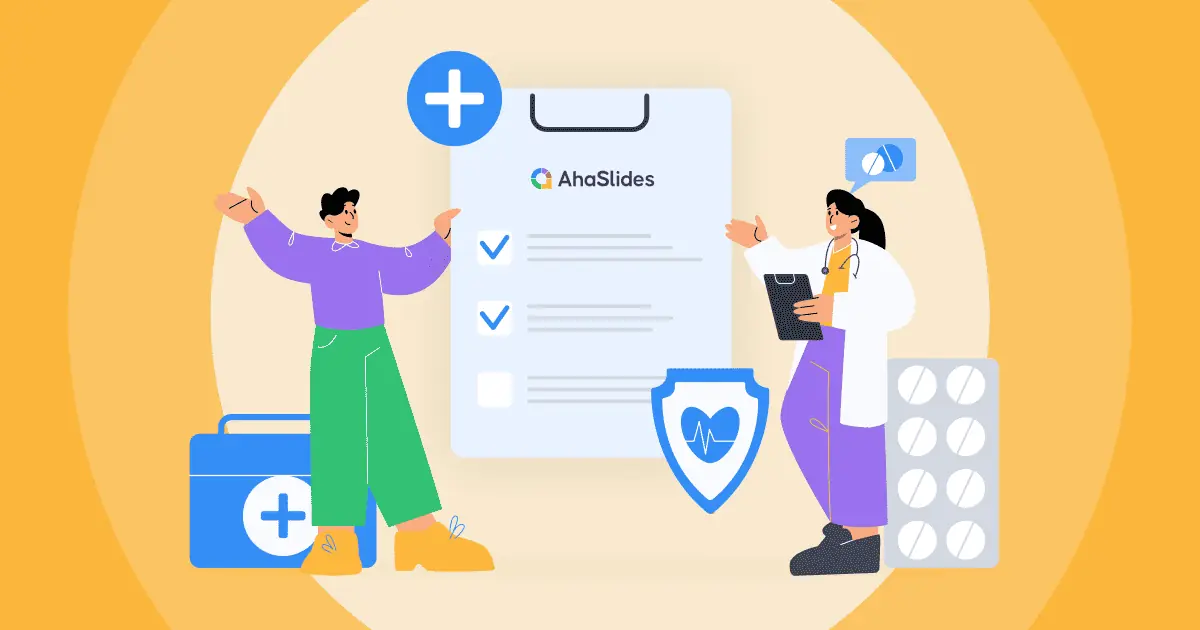Have you heard of sabbatical leave in academia? Well, it may surprise you that businesses are now offering this benefit to their employees too. It almost sounds too good to be true. Let's check out what it means in 2025!
So let's learn about sabbatical leave, how it works, and its benefits to employees and employers!
- What Is Sabbatical Leave At Work?
- Types Of Sabbatical Leave
- Benefits Of Sabbatical Leave
- What Is Included In A Sabbatical Leave Policy?
- How To Improve A Sabbatical Leave Policy
- Key Takeaways
More Tips with AhaSlides
Function of human resource management
Employee appreciation gift ideas
FMLA Leave - Medical Leave

Engage with your new employees.
Instead of a boring orientation, let's start a fun quiz to refresh new day. Sign up for free and take what you want from the template library!
🚀 To the clouds ☁️
What Is Sabbatical Leave At Work?
Sabbatical leave at work is a type of extended leave that employers offer to their employees, allowing them to take a long break from their job duties. It is typically granted after a certain number of years of service, and it provides employees an opportunity to rest, recharge, and pursue personal or professional development activities.
It can vary in length but typically ranges from a few weeks to several months or even a year. It may be fully paid or unpaid, depending on the employer's policy and the employee's situation.

During the leave, employees can pursue activities such as travel, volunteer work, research, writing, or training that can help enhance their skills and knowledge.
Some companies also offer this leave as part of their efforts to retain top talent and promote employee well-being. It can also serve as a valuable benefit for attracting new employees seeking work-life balance and opportunities for personal growth.
Types Of Sabbatical Leave
Here are three sabbatical leave that an employee may be eligible for, depending on their employer's policies and their ability:
- Paid sabbatical: The employee receives regular pay while taking work off. It is a rare benefit and is usually reserved for high-level executives or tenured professors.
- Unpaid sabbatical: Unpaid sabbatical is not paid by the employer, and the employee may be required to use their accrued vacation time or take an extended unpaid leave of absence.
- Partially paid sabbatical: This hybrid of the two types mentioned above, where the employee receives partial pay during their leave.

Benefits Of Sabbatical Leave
This leave can offer several benefits to both employees and employers, as follows:
Benefits for Employees:
1/ Renewed Energy and Motivation
Taking a break from work can help employees recharge their energy and motivation. They return to work with renewed purpose, creativity, and productivity.
2/ Personal Development
Sabbatical leave allows employees to focus on self-development, pursue further education or training, or work on personal projects. This can help employees develop new skills and broaden their perspectives.
3/ Career Development
It can help employees gain new perspectives and skills that can be applied to their current job or future career opportunities. It can also provide time to reflect on career goals and plan for growth.
4/ Work-Life Balance
It allows employees to improve their work-life balance, reduce stress and anxiety and improve their overall well-being.

Benefits for Employers:
1/ Employee Retention
Sabbatical leave can effectively retain valuable employees by offering them an opportunity to take a break from work and return with renewed energy and motivation. This will be much more cost-effective than recruiting new employees and training them in the first place.
2/ Increase productivity
Employees who take this leave often return to work with new ideas, skills, and perspectives that can enhance their productivity and contribute to the organization's success.
3/ Leadership Planning
Sabbatical leave can be used as a chance for succession planning, allowing employees to gain new skills and experiences, which prepare them for future leadership roles within the organization.
4/ Employer Branding
Offering this leave can help employers build a positive reputation as a supportive and employee-centric organization. Then gaining more opportunities to attract bright candidates.
What Is Included In A Sabbatical Leave Policy?
A sabbatical leave policy is a set of guidelines and procedures that an employer establishes to govern the leave process to their employees.
The policy can vary depending on the organization and the industry. However, here are some common elements that may be included:
The policy should be clear and transparent, outlining the employer's and employee's expectations, responsibilities, and benefits.
How To Improve Policy
Collecting feedback from employees who have taken sabbatical leave or are interested in taking break is an essential first step in improving the policy.
Utilizing the Q&A feature of AhaSlides can be an effective way to gather anonymous feedback to identify areas for improvement and guide changes accordingly. The anonymity of the Q&A session can encourage employees to provide honest and constructive opinions, which can be invaluable in making the policy more effective.

Here are some potential questions you could ask:
- Have you ever taken a sabbatical leave? If so, how did it benefit you personally and professionally?
- Do you think this leave is a valuable benefit for employees? Why or why not?
- What do you think should be the minimum length of a sabbatical leave?
- What kind of activities or projects would you pursue during a the leave?
- Should sabbatical leave be available to all employees or only those who meet specific criteria?
- How can sabbatical leave impact an organization's culture and employee retention?
- Have you heard of any unique or creative sabbatical leave programs organisations offer? If so, what were they?
- How often do you think employees should be able to take this type of leave?
Key Takeaways
Sabbatical leave is a valuable benefit that allows employees to take a break from work and pursue personal and professional development. In addition, it can also provide benefits to the organization by improving employee retention, boosting productivity, and encouraging knowledge sharing. Overall, this leave can be a win-win for both employees and employers.








